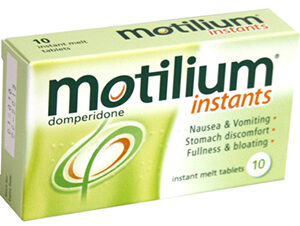Brand and Generic Names
Protonix is the brand name of the medication, while its generic name is pantoprazole sodium. It comes under the drug class known as proton pump inhibitors (PPIs).
Available Dosage Forms
Protonix is available in two dosage forms: delayed-release tablets and delayed-release oral suspension. The tablets come in 20 mg and 40 mg strengths, while the oral suspension packet is available in a 40 mg dose.
Indications for Use
Protonix treats gastroesophageal reflux disease (GERD), erosive esophagitis, and conditions involving excessive stomach acid such as Zollinger-Ellison syndrome. It’s also used in the healing of damage to the esophagus and to maintain healing of the esophagus.
How Protonix Works
The active ingredient in Protonix, pantoprazole, works by inhibiting the H+/K+ ATPase enzyme in the stomach lining. This action blocks the final step of acid production, leading to a decrease in gastric acid levels.
Before Starting Protonix
Patients should inform their healthcare provider about any history of liver disease, osteoporosis, low magnesium, or other medical conditions. Informing about allergies to pantoprazole or similar drugs like omeprazole is vital.
Proper Usage and Administration
Protonix should be taken once daily, with or without food, but preferably taken before a meal. Swallow the delayed-release tablets whole; do not crush, break, or chew. The oral suspension should be mixed with apple juice or applesauce and taken immediately.
Adjustments for Specific Populations
Pediatric and geriatric patients may require dose adjustments. Kidney impaired patients can use the standard dose, but those with severe liver impairment may need reduced doses. Protonix hasn’t been proven safe for pregnant or breastfeeding women; use only if clearly needed.
Drug Interactions
Protonix may interfere with absorption of drugs like ketoconazole, ampicillin, iron salts, and atazanavir. Combining with warfarin may require monitoring for increases in INR and prothrombin time. Inform healthcare providers about all medications, including over-the-counter drugs, being taken.
Side Effects
Common side effects include headache, diarrhea, nausea, abdominal pain, and vomiting. Serious side effects might occur, such as Clostridium difficile-associated diarrhea, bone fractures, hypomagnesemia, and vitamin B12 deficiency in long-term use.
Missed Dose Protocol
If a dose is missed, take it as soon as possible unless it’s almost time for the next dose. In that case, skip the missed dose and resume the regular dosing schedule. Do not double doses to catch up.
Storage and Disposal
Store Protonix at room temperature, away from excess heat and moisture. Delayed-release tablets and oral suspension should be kept in their original package until use. Dispose of any unused medication properly, according to local regulations.
Monitoring During Treatment
Patients should have regular follow-ups to monitor for efficacy and side effects. Monitoring may include blood tests to check magnesium levels, especially with prolonged use or if symptoms like seizures, dizziness, or an abnormal heartbeat occur.
Discontinuation of Protonix
If instructed to stop Protonix, gradual reduction in dosage may be recommended to prevent a rebound effect of increased acid secretion. Consult a healthcare provider for the proper tapering regimen.
Information for Healthcare Providers
Healthcare providers should evaluate whether a patient is at increased risk for osteoporosis-related fractures and consider vitamin B12 levels in patients on long-term therapy. Symptomatic response does not preclude the presence of gastric malignancy. Consider additional follow-up and diagnostic testing in adult patients who have suboptimal response or an early symptomatic relapse after completing treatment.






Reviews
There are no reviews yet.